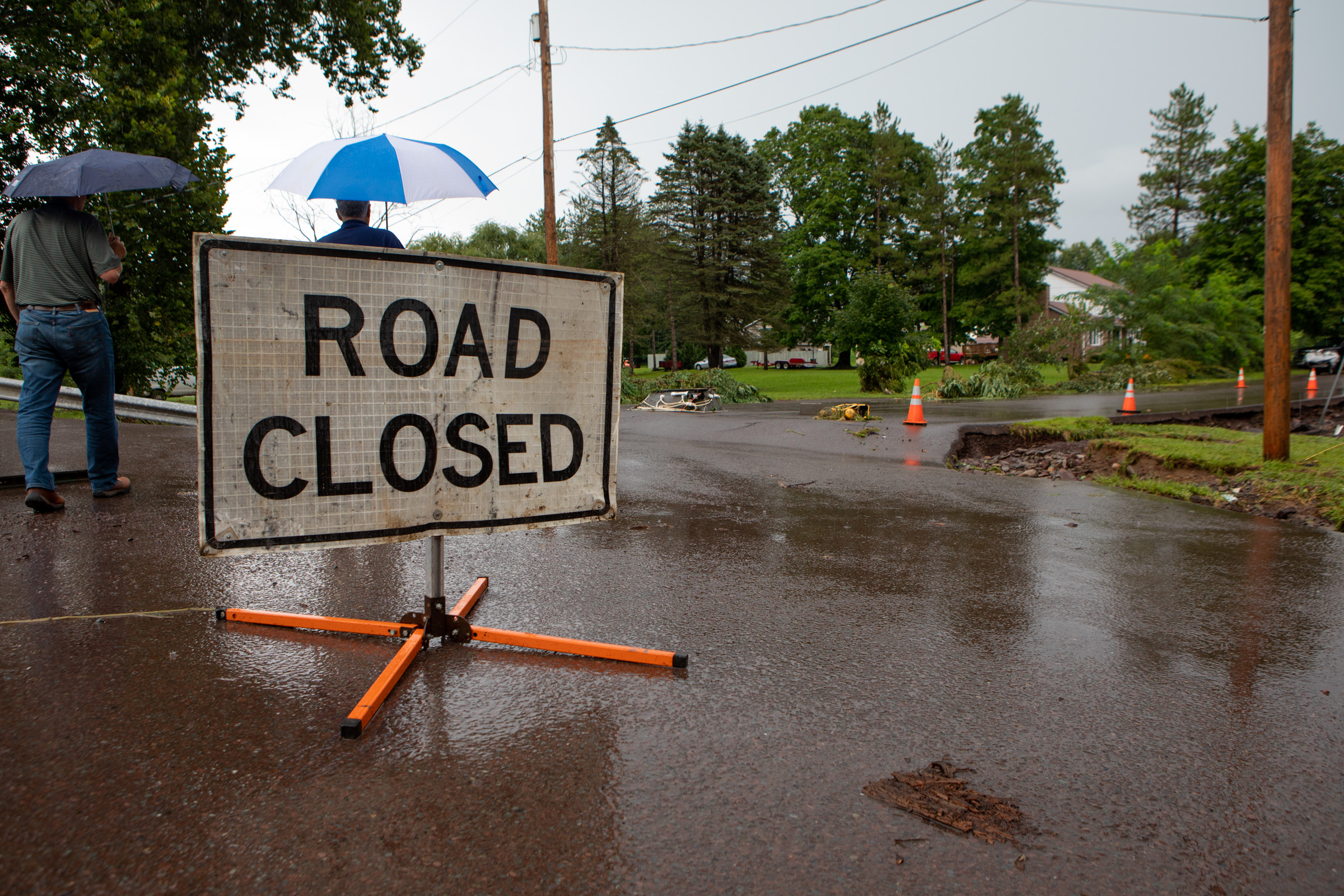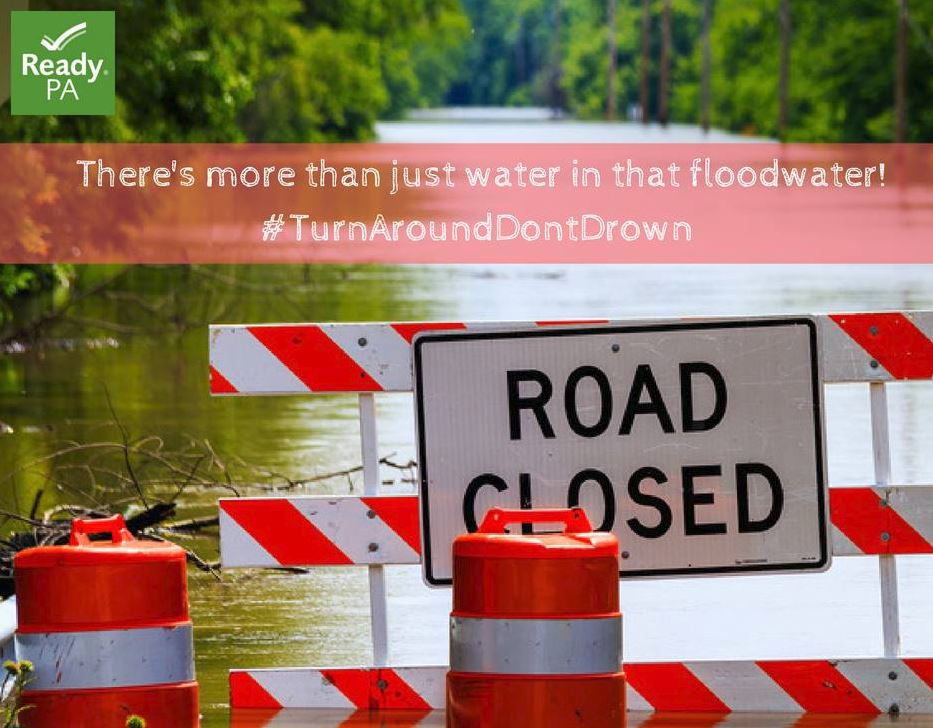Know the Threats: Flooding

Every year in the United States, flooding destroys thousands of homes, causes billions of dollars in damages and tragically claims lives. Flooding is the most common natural disaster in Pennsylvania. Where it can rain, it can flood (PDF) – so no matter where you live, you should be prepared for a flood emergency, but it’s especially important if you live near water, in a low-lying area or downstream from a dam.
Floods can occur in different ways. Some develop slowly during an extended period of rain, or in a warming trend following a heavy snow. Others, like flash floods, can happen very quickly, without any visible signs of rain. Even small streams and dry creek beds can overflow to produce flooding.
General Flood Preparedness
Take the following steps to prepare for a flood emergency:
- Get an emergency supply kit that includes enough provisions for you and your family to live on for a minimum of three days.
- Make an emergency plan for you and your family.
- Learn about the emergency plans that have been established in your area by your state and local government.
- Visit Flood Smart to find out if your home is at risk for a flood.
- Learn Pennsylvania-specific flood zone information from the Pennsylvania Emergency Management Agency.
- Elevate the furnace, water heater and electric panel in your home if you live in an area that has a high flood risk.
- Consider installing "check valves" to prevent flood water from backing up into the drains of your home. As a last resort, use large corks or stoppers to plug showers, tubs, or basins.
- If feasible, construct barriers to stop floodwater from entering the building and seal walls in basements with waterproofing compounds.
- Property insurance does not typically cover flood damage. Talk to your insurance provider about your policy and consider if you need additional coverage. You may also want to learn about the National Flood Insurance Program.
- Understand the difference between a flood watch and a flood warning. Learn more below.
Flood Watch vs. Flood Warning
A flood watch means that flooding may occur. Residents should stay alert, closely monitor rivers and streams, and be prepared to move to high ground quickly.
A flood warning means that there is actual flooding. Residents should act at once and move to high ground.
Flood Facts for Driving

- Six inches of water will reach the bottom of most passenger cars causing loss of control and possible stalling.
- A foot of water will float many vehicles.
- Two feet of rushing water can carry away most vehicles including sport utility vehicles (SUVs) and pick-ups.
- Remember: Turn Around, Don't Drown!
Learn more about what to do when encountering flooded roadways from the Pennsylvania Department of Transportation.
What to Do in a Flash Flood
Flash floods occur within six hours of the beginning of heavy rainfall. Below are some guidelines for keeping safe during a flash flood:
- Go to high ground immediately.
- Get out of areas subject to flooding, such as low spots, canyons, washes, etc.
- Do not attempt to cross a flowing stream on foot. Even water only six inches deep, when moving at a high rate of speed, can knock you off your feet.
- Never drive through flooded areas or standing water. Shallow, swiftly flowing water can wash a car from a roadway. Also, the roadbed may not be intact under the water.
- If the vehicle stalls, abandon it immediately and seek higher ground. Rapidly rising water may engulf the vehicle and its occupants.
- Be especially cautious at night when it’s harder to recognize flood dangers.
- Do not camp or park your vehicle along streams and washes, particularly during threatening conditions.
- Understand the difference between a flash flood watch and a flash flood warning.
- A flash flood watch means that flooding may occur. Residents should stay alert, closely monitor rivers and streams, and be prepared to move to high ground quickly. A flash flood warning means that there is actual flooding. Residents should act at once and move to high ground.